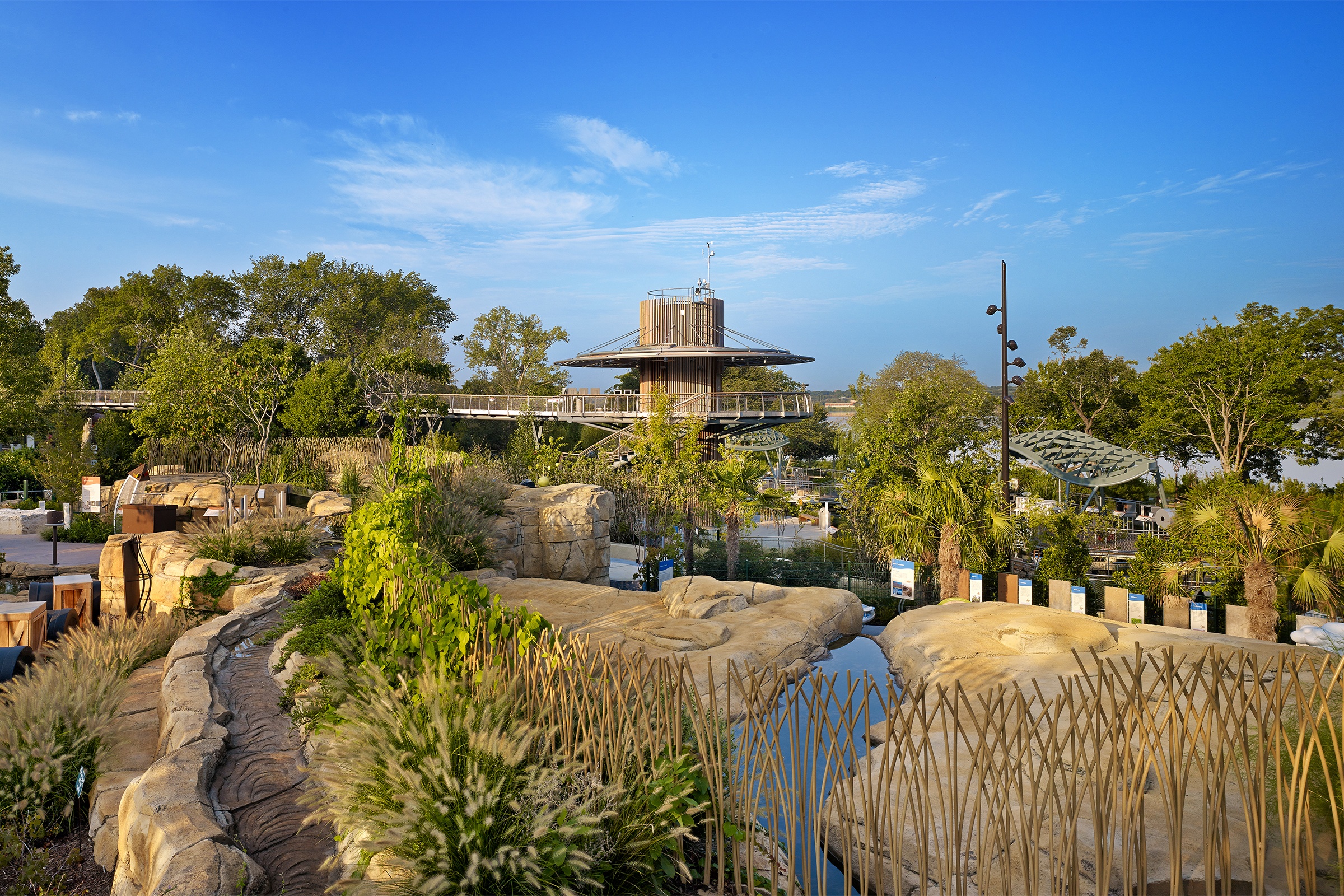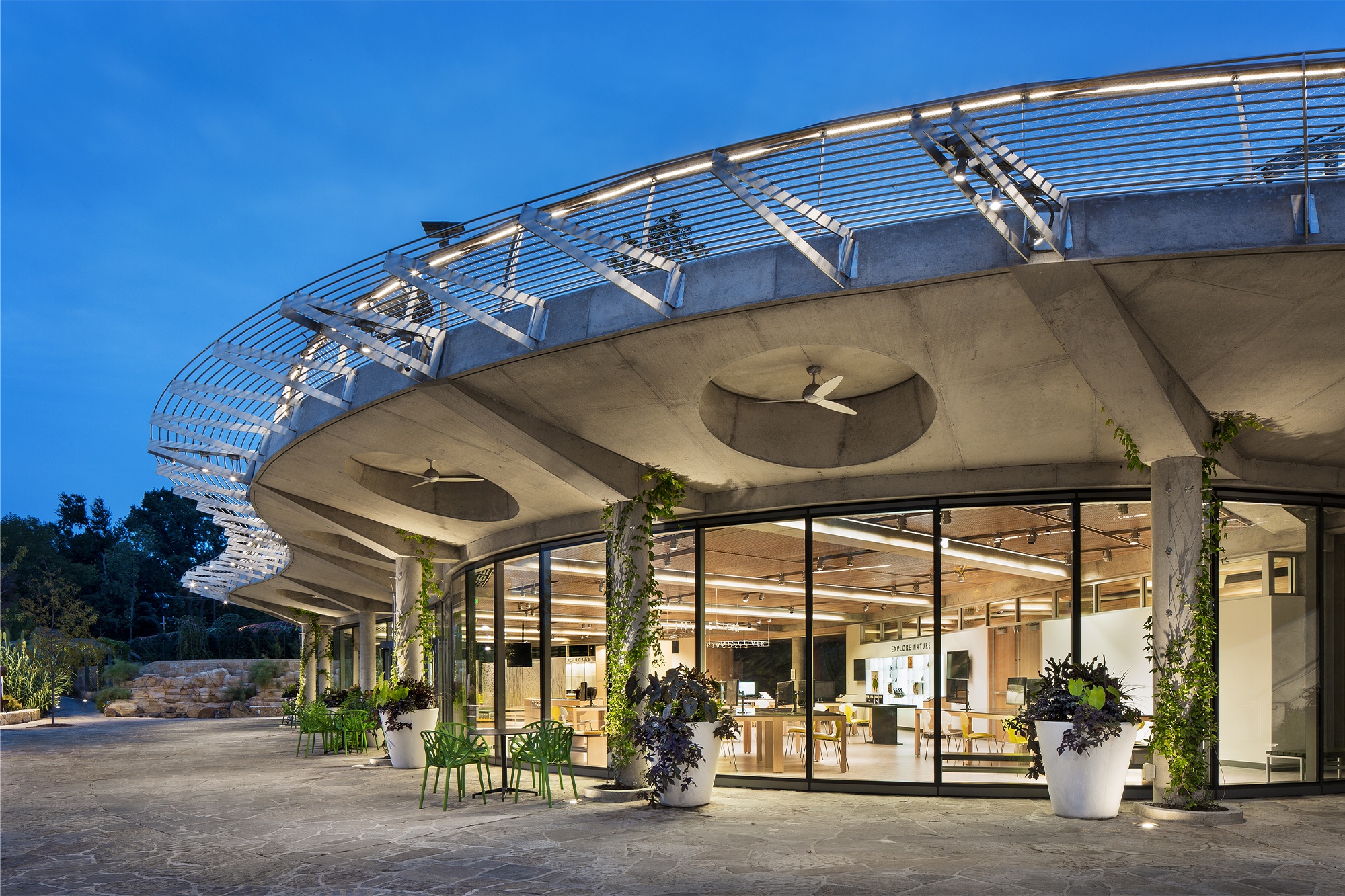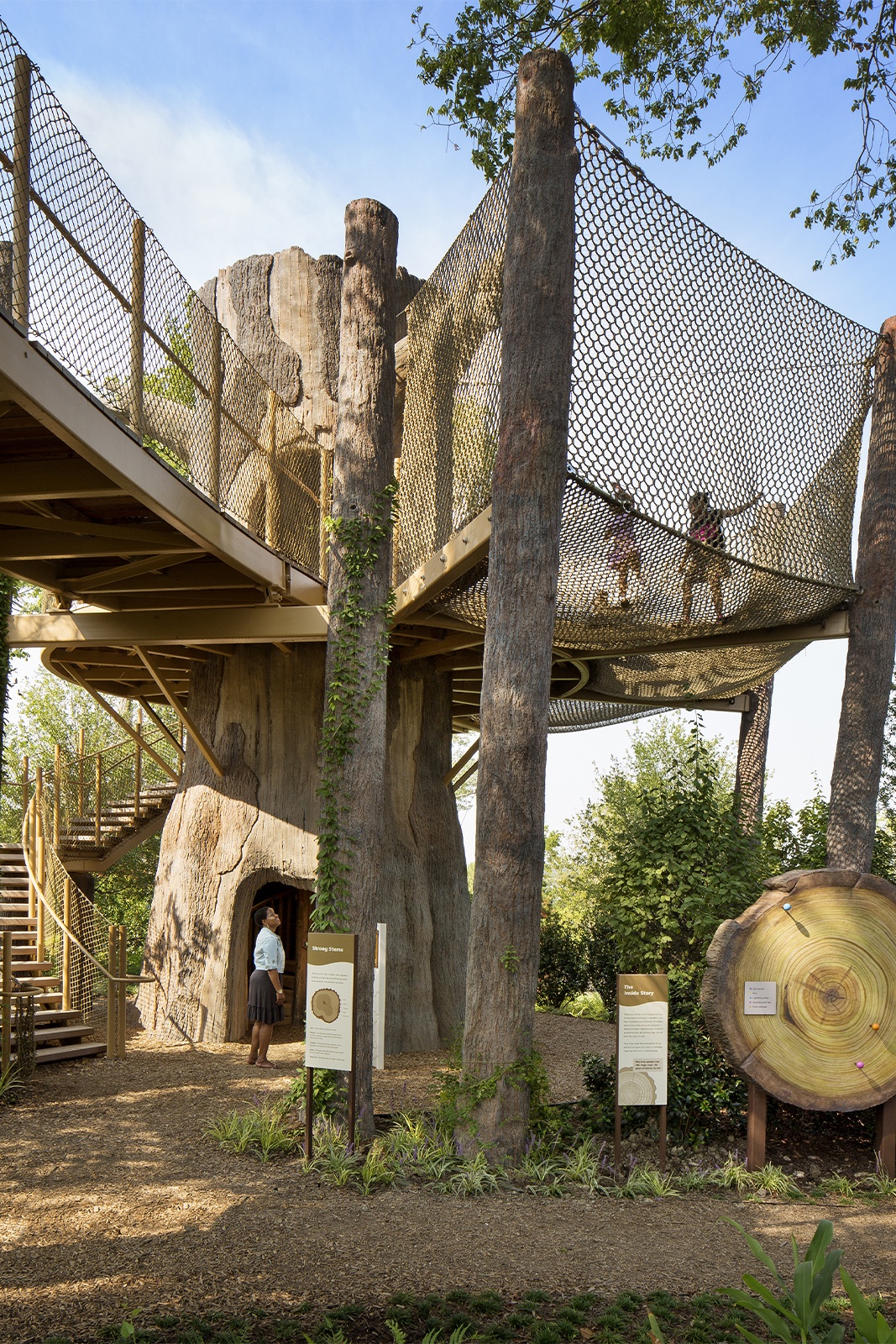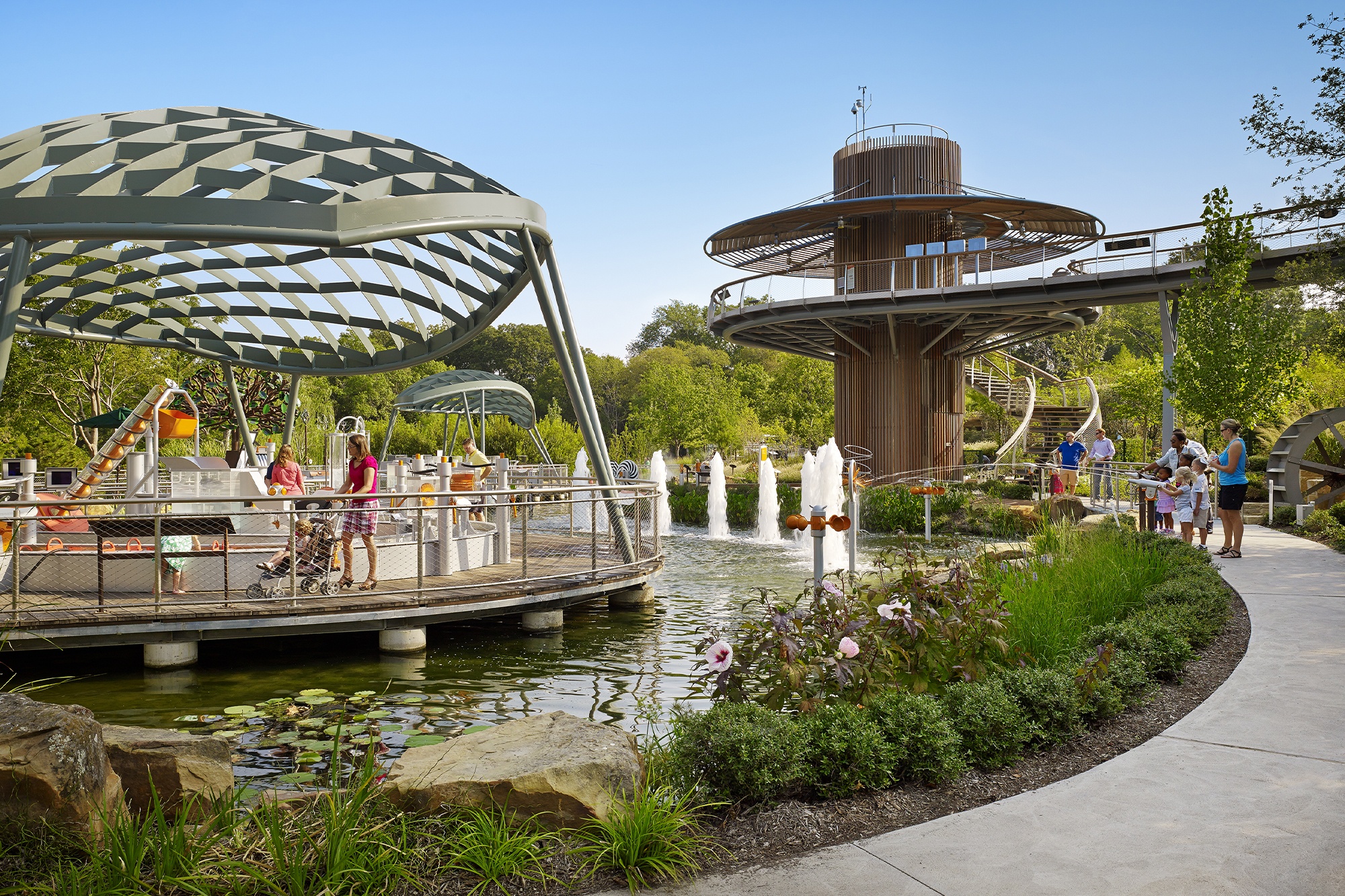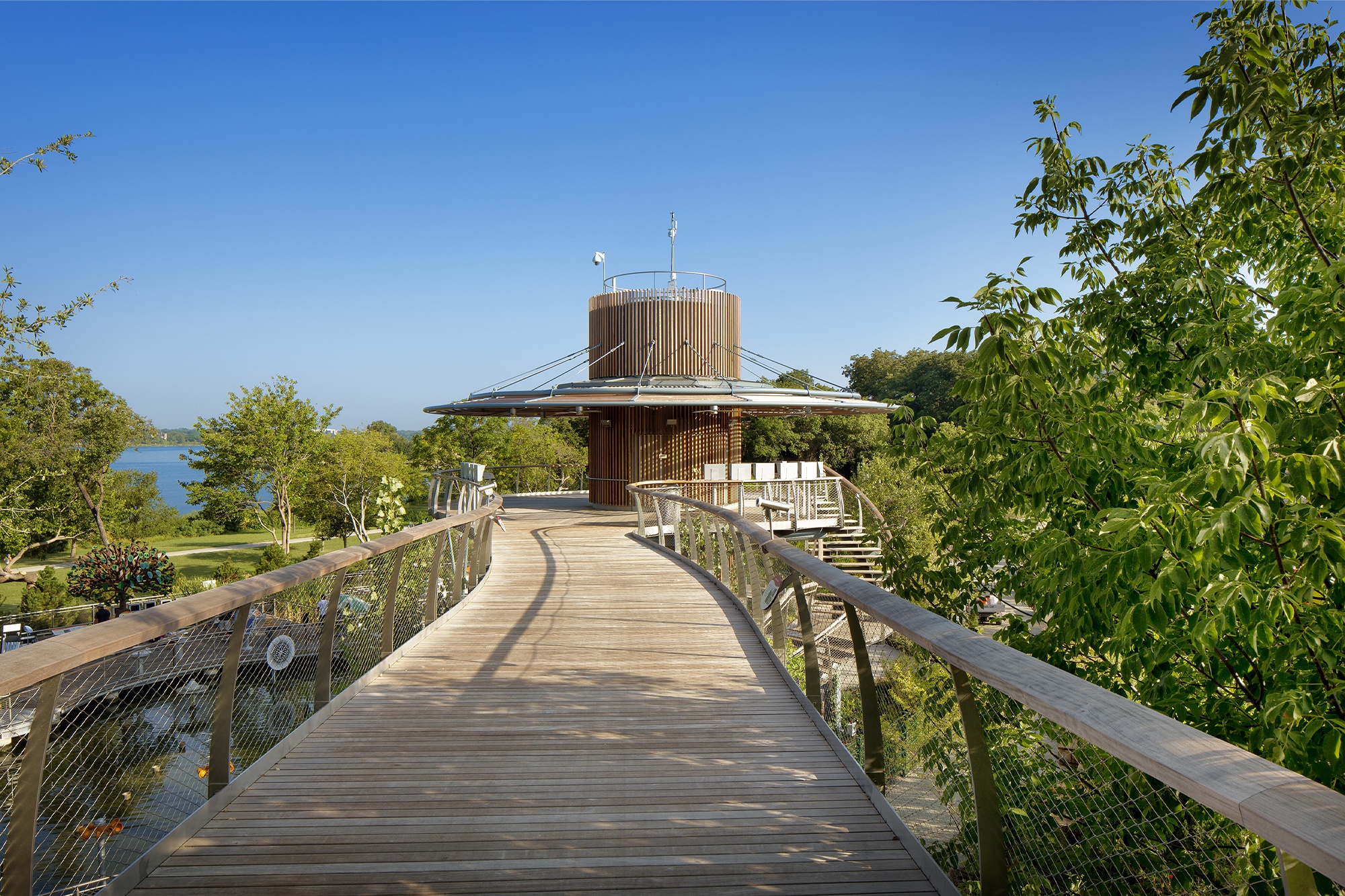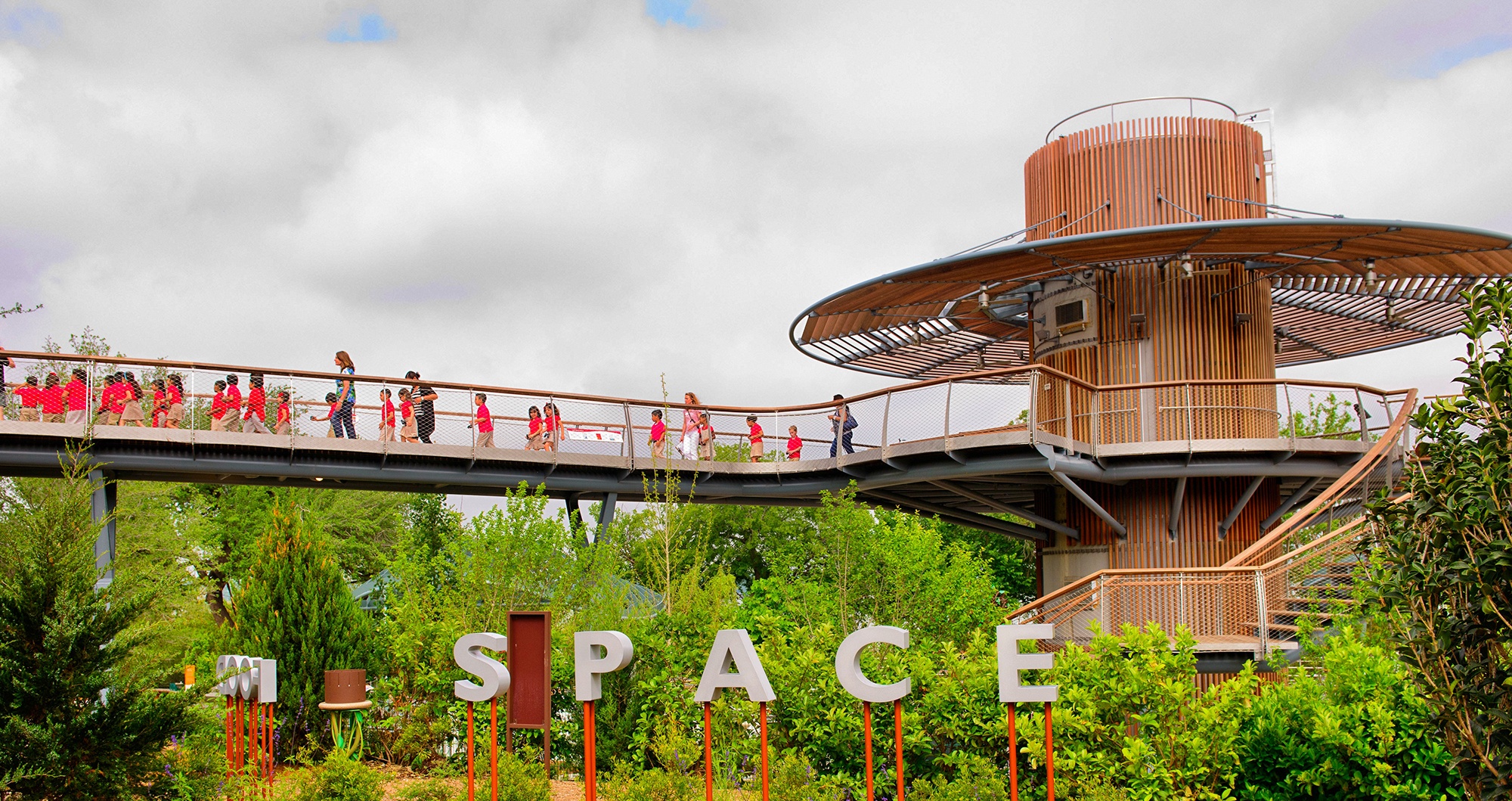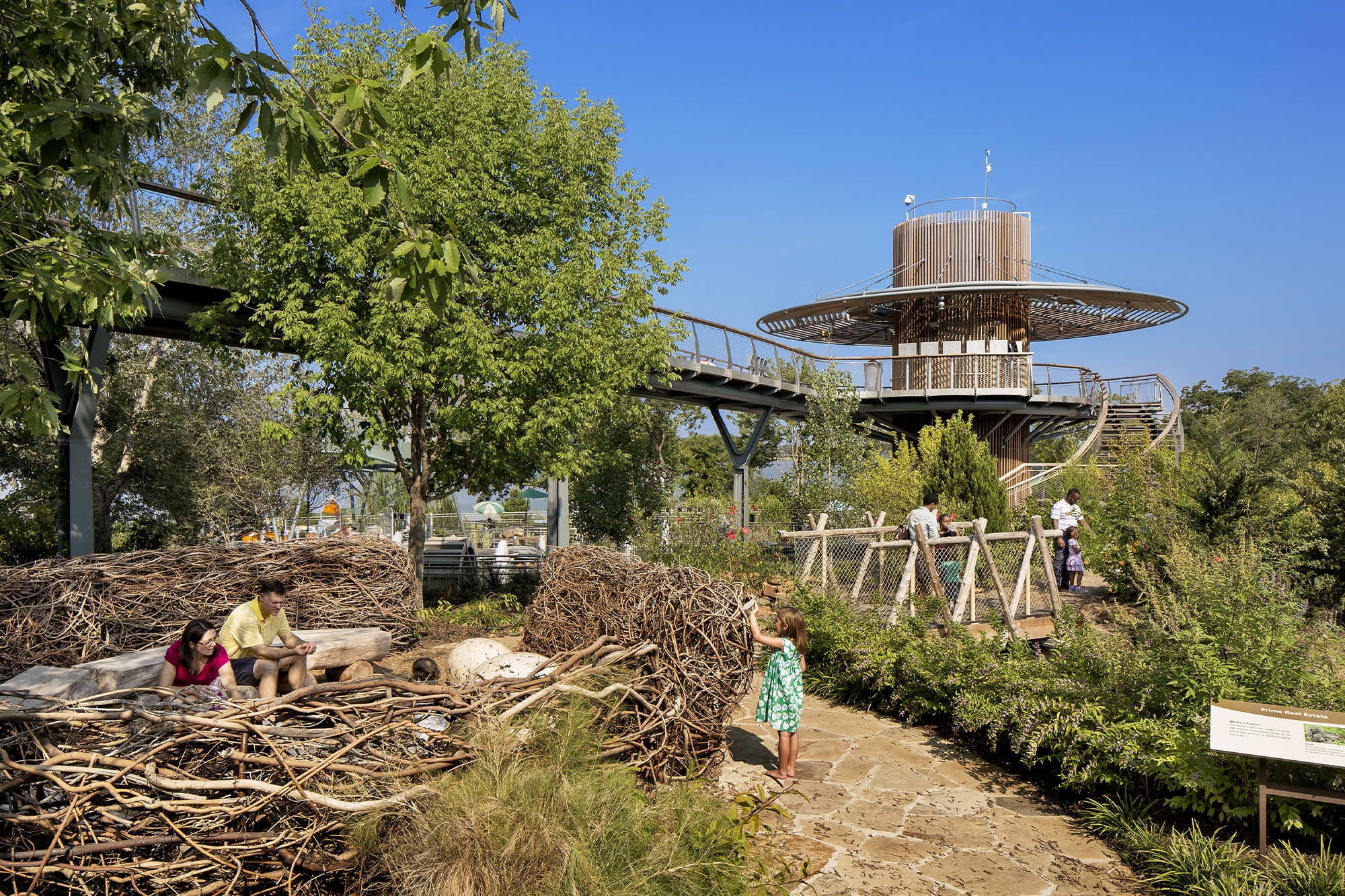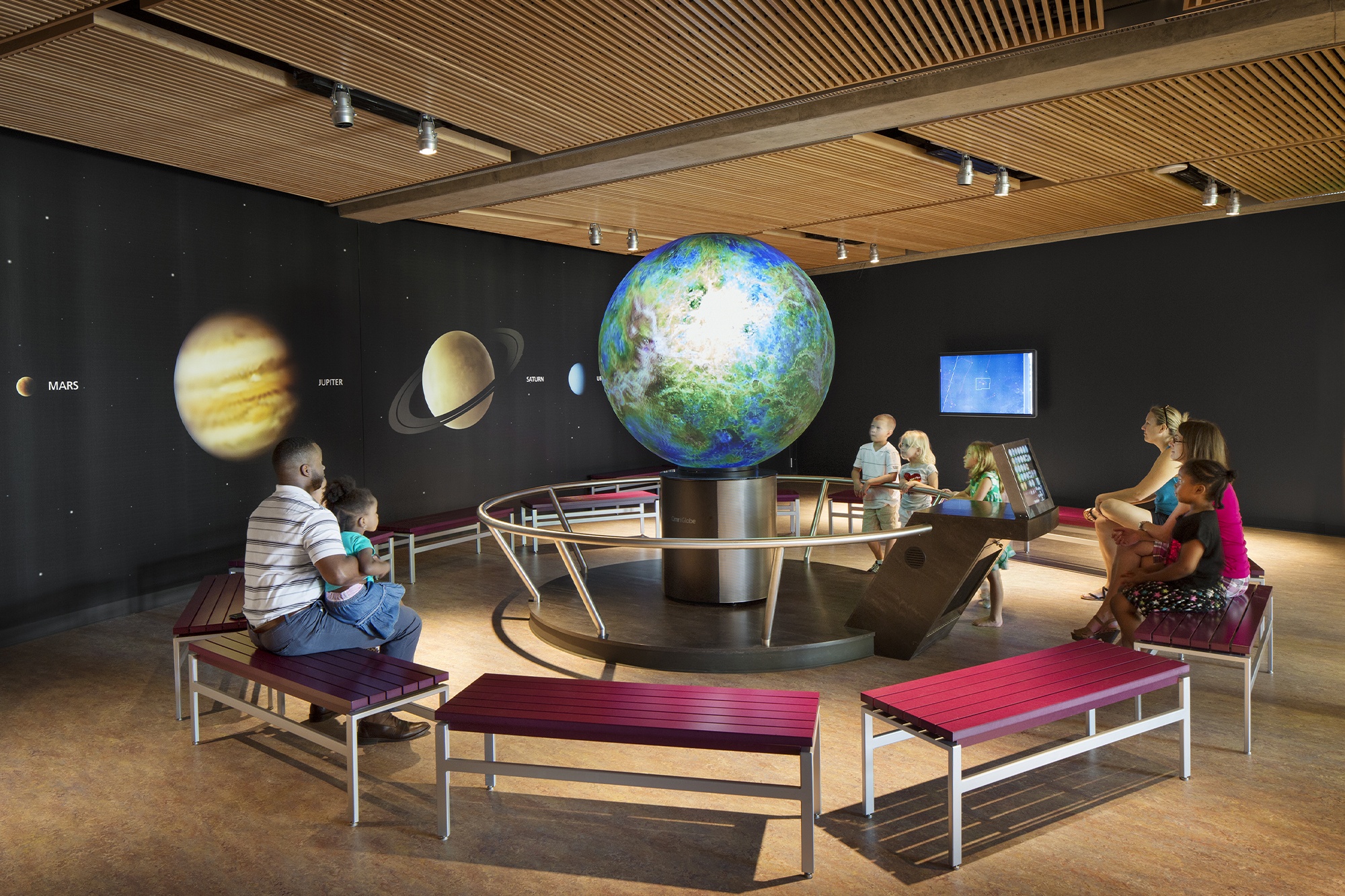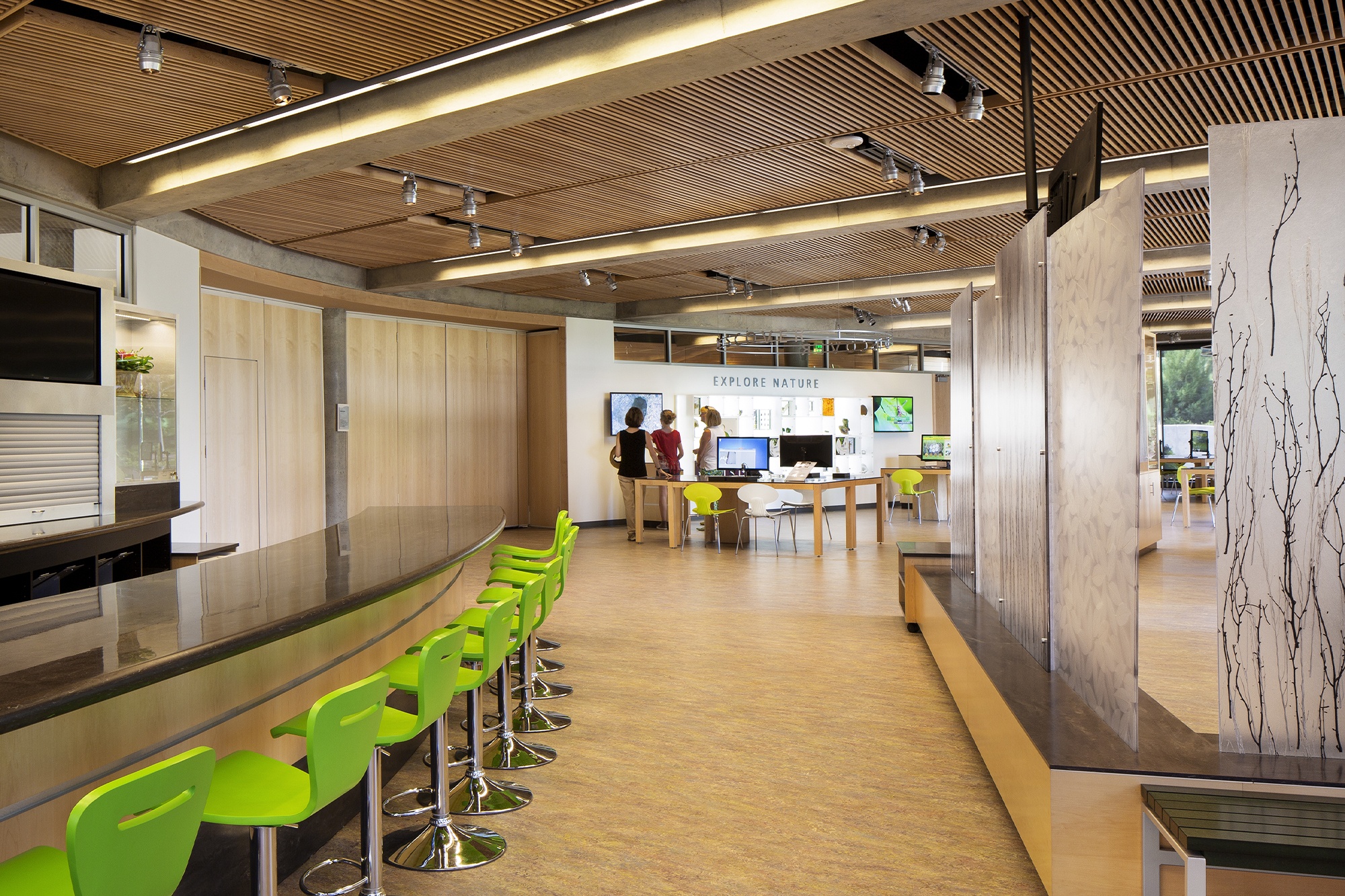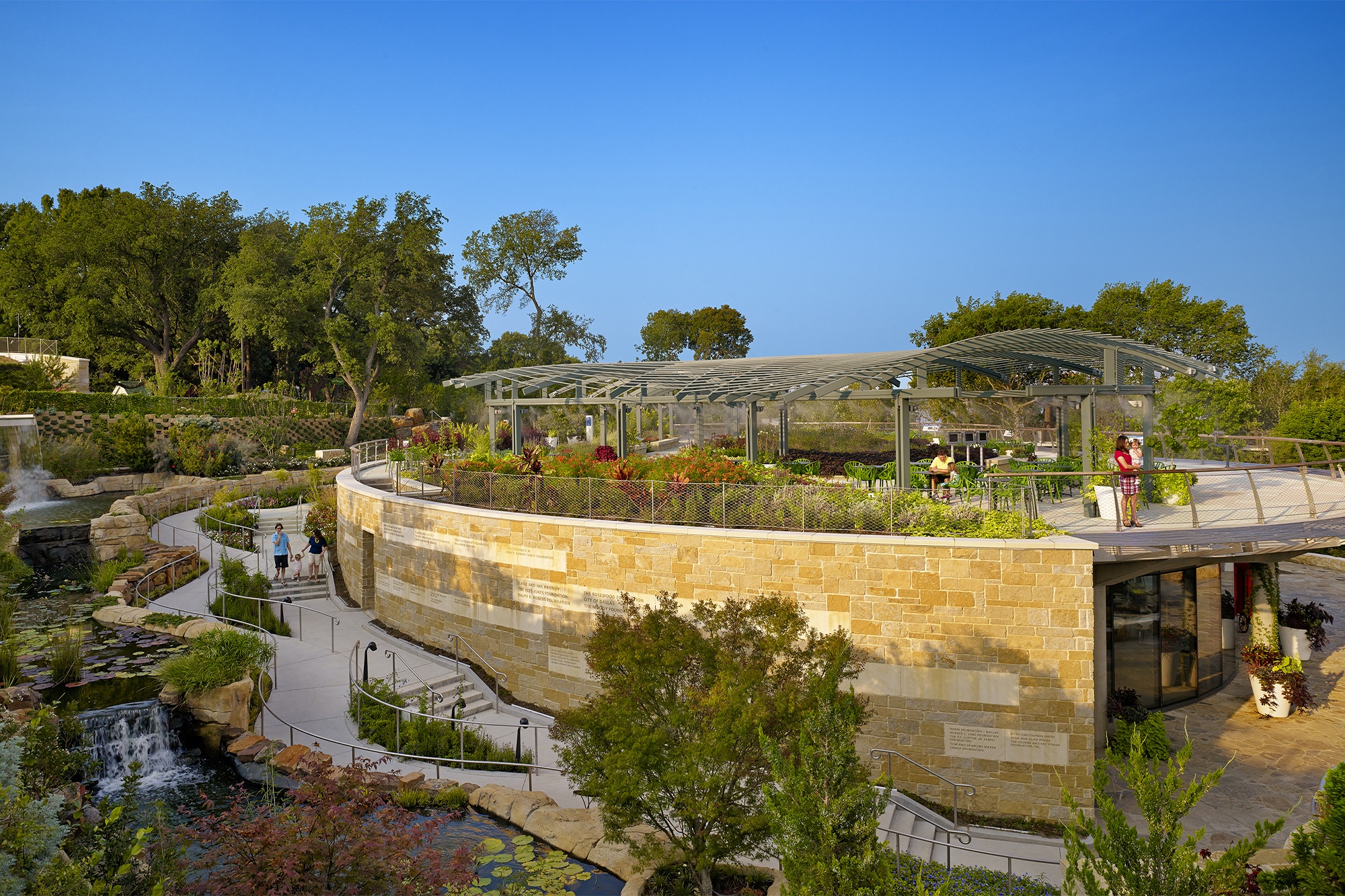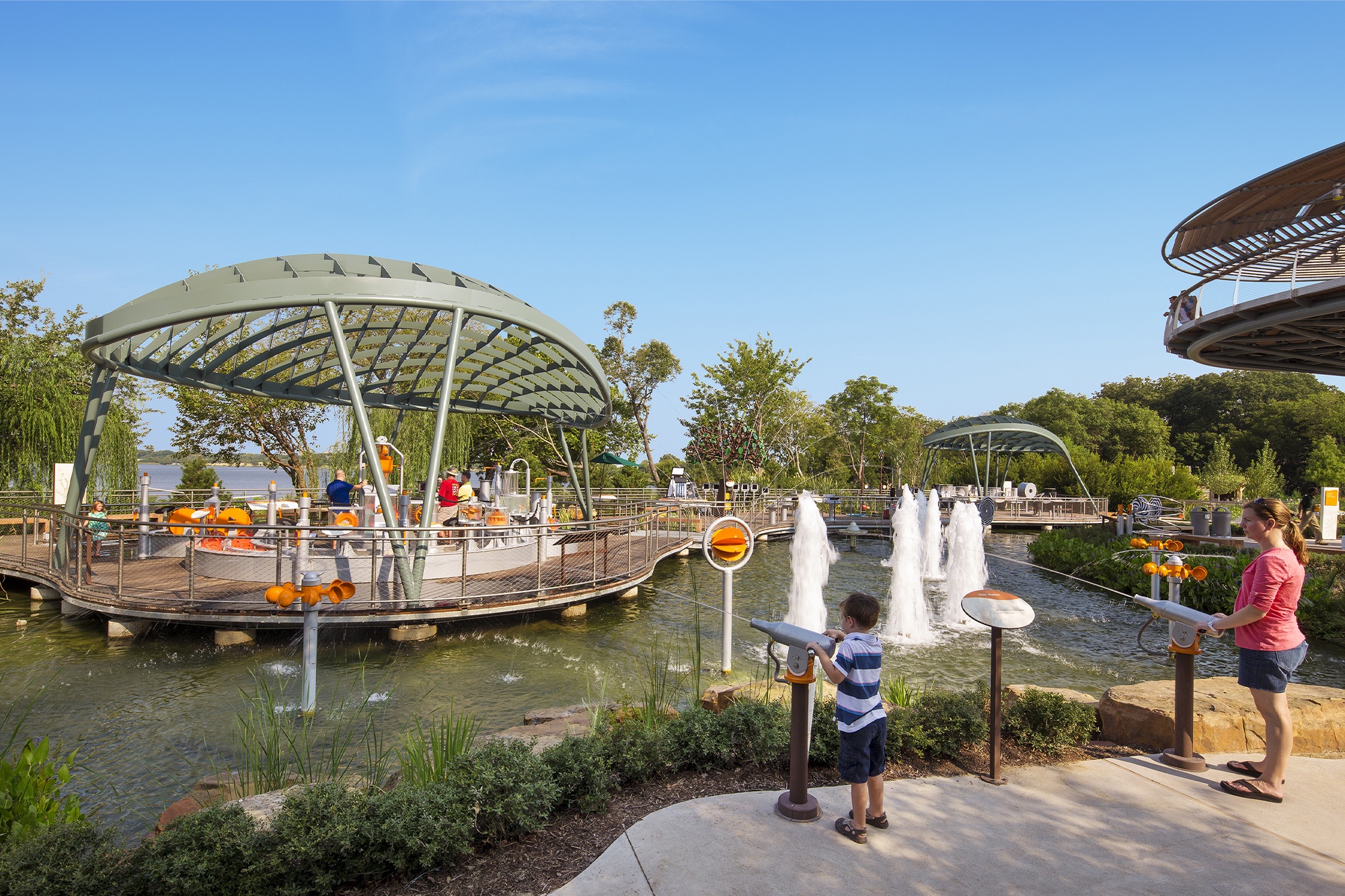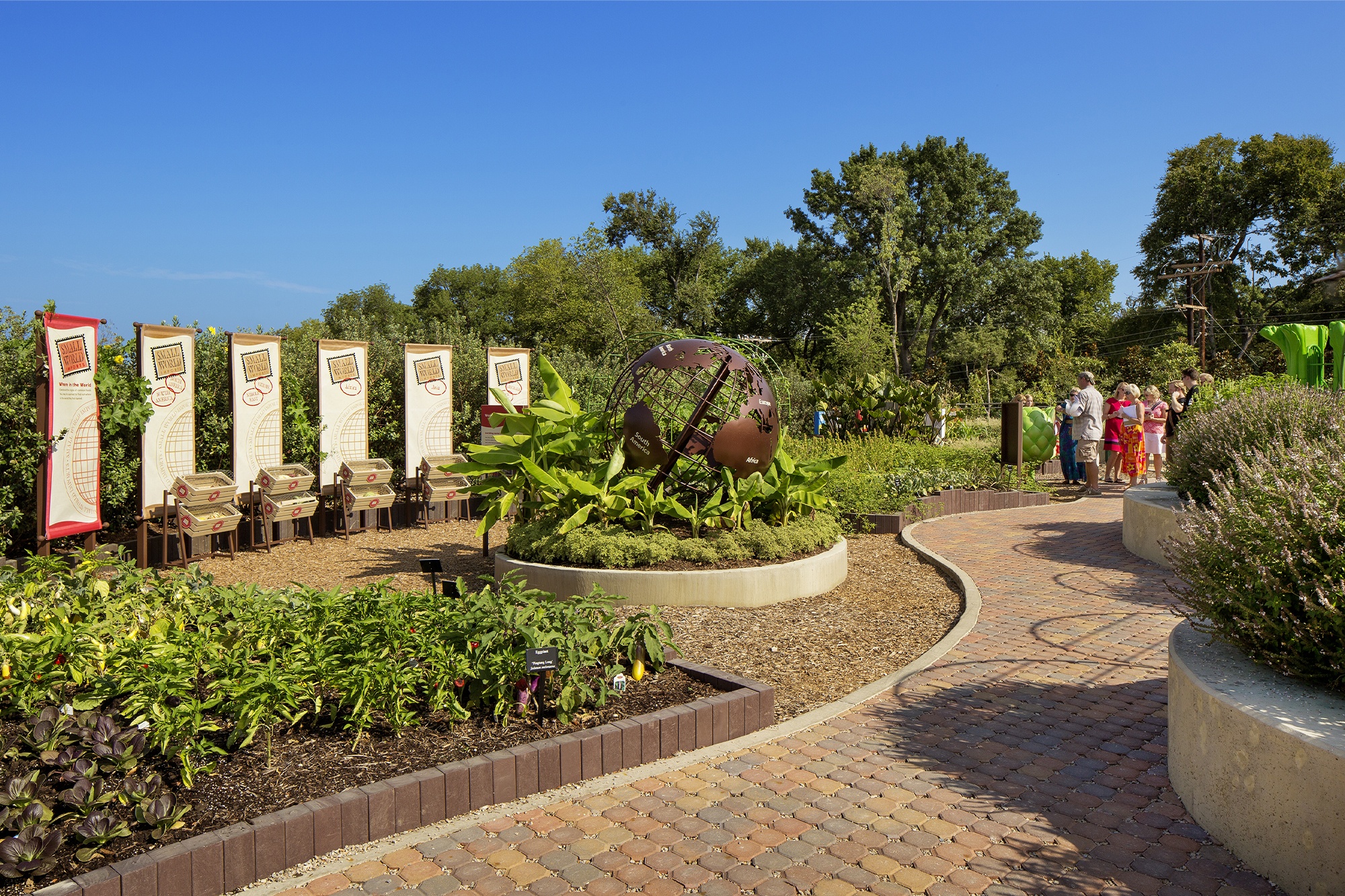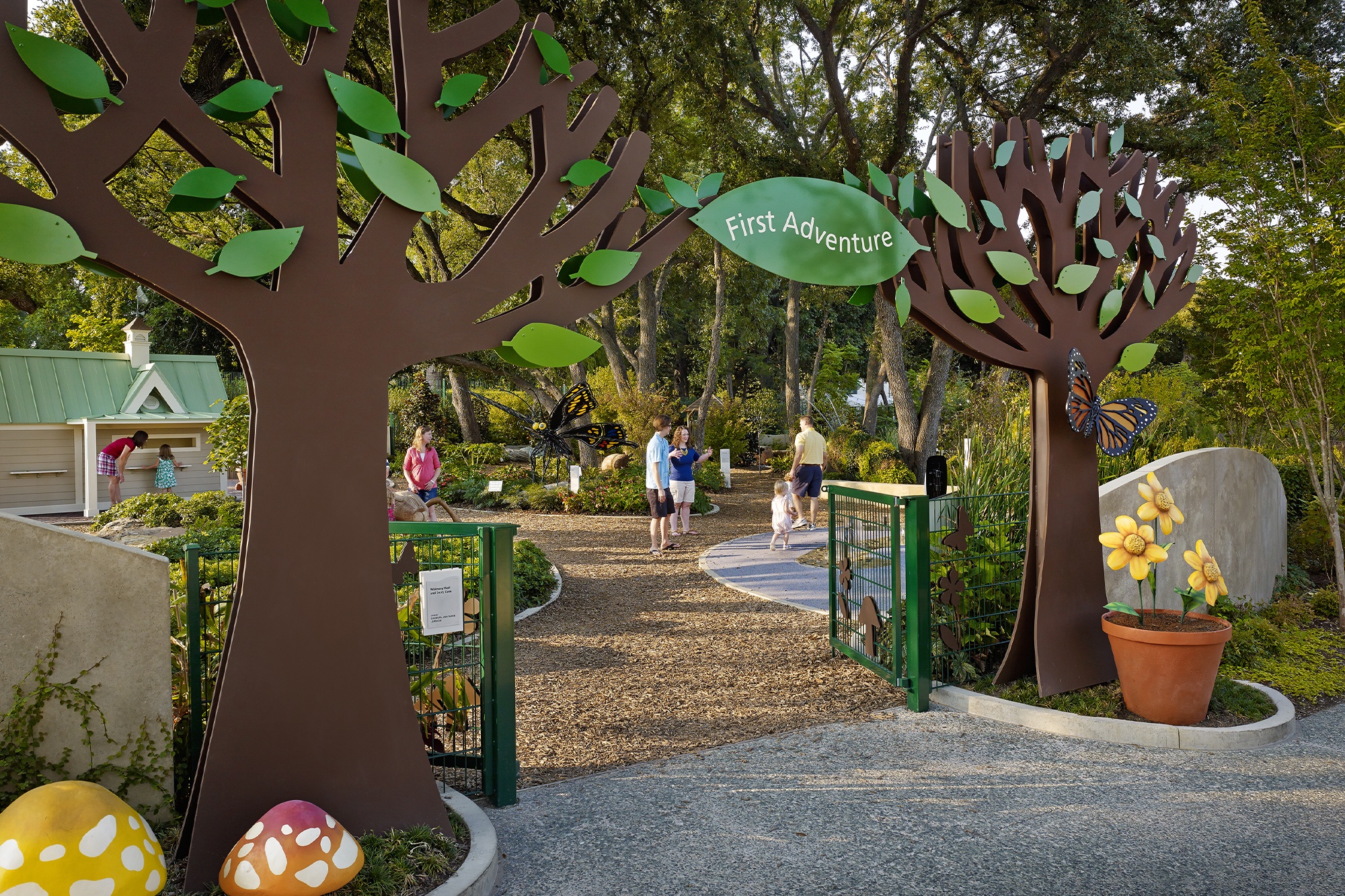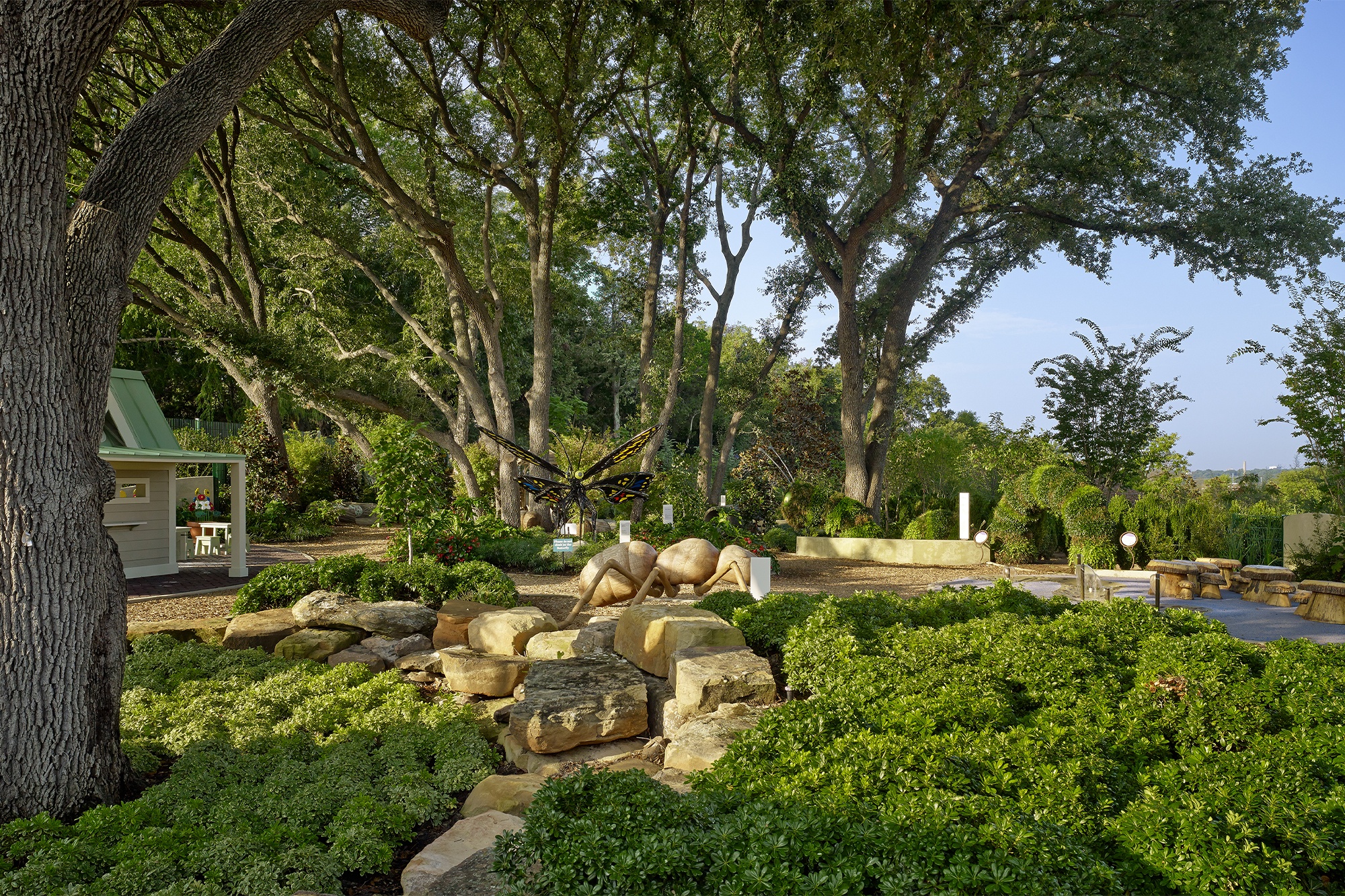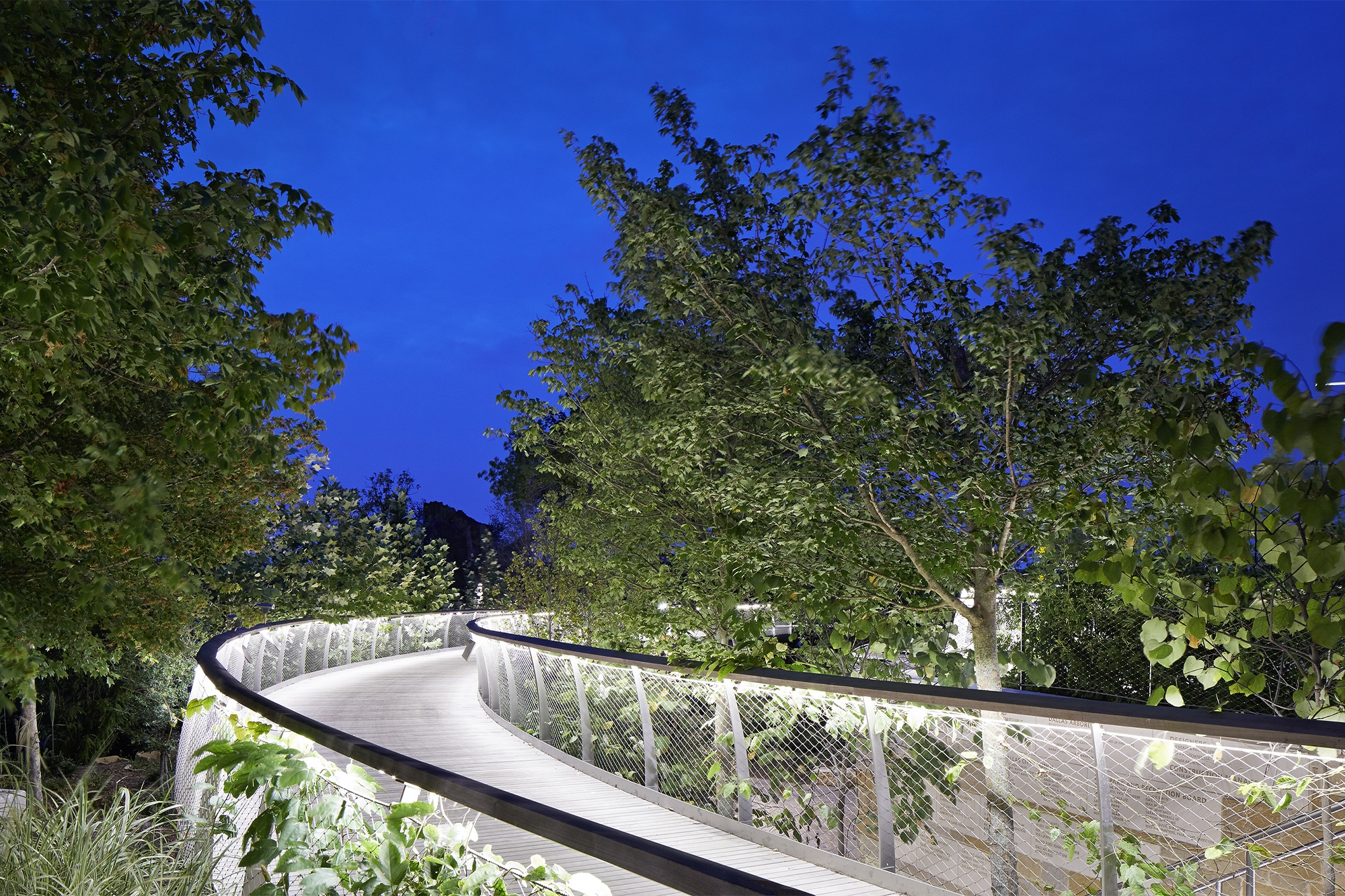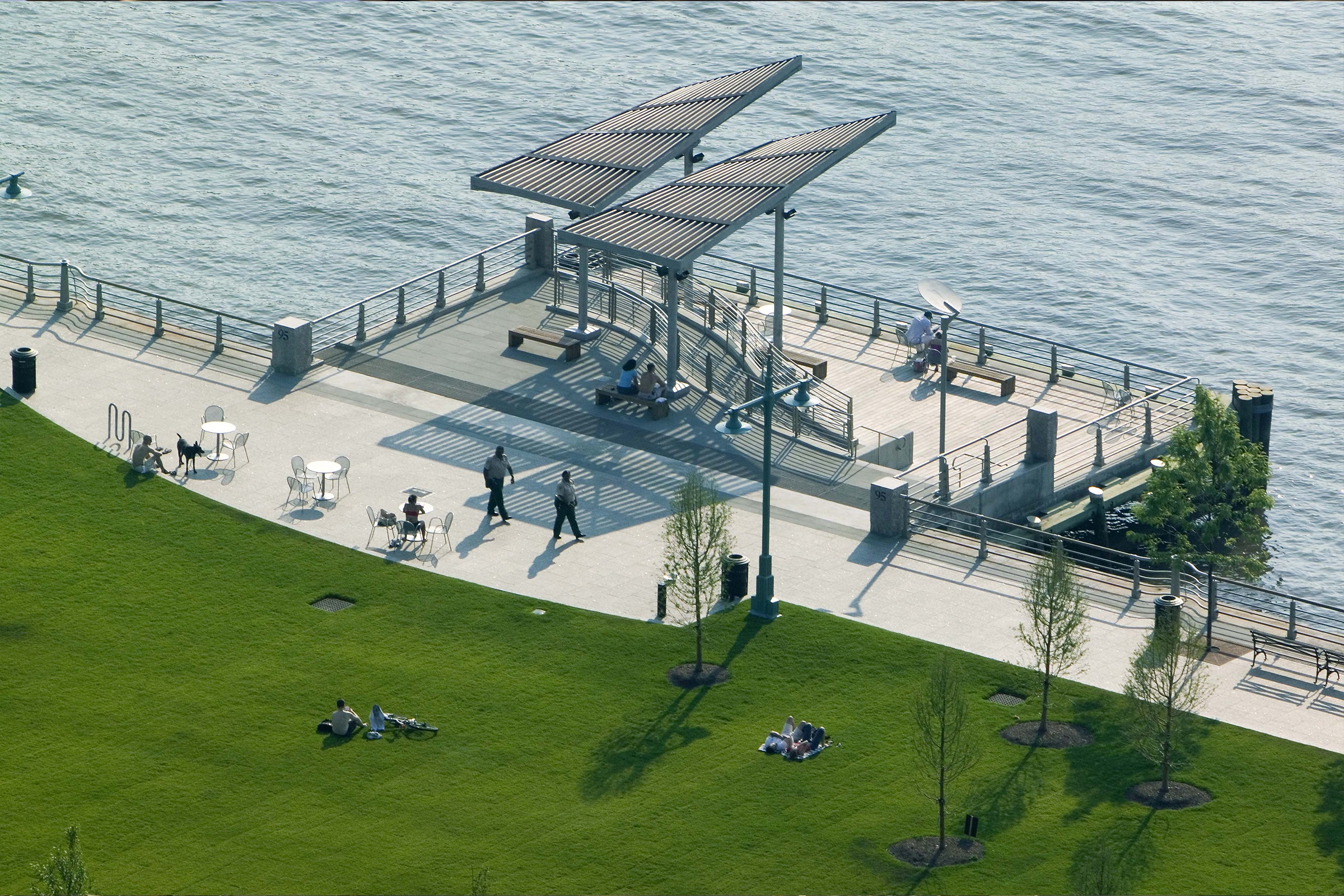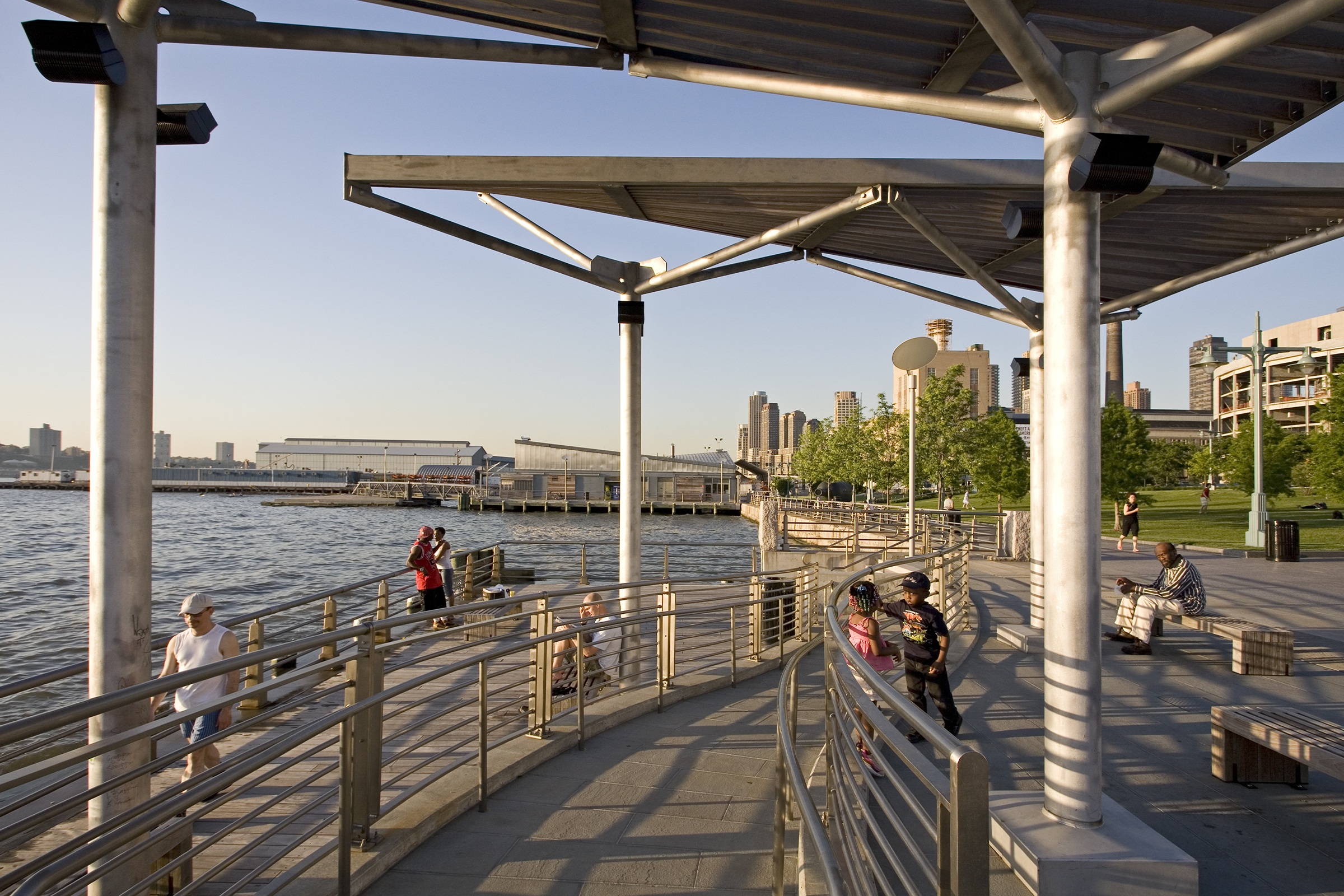The new, eight-acre Rory Meyers Children’s Adventure Garden & Exploration Center creates an experiential learning oasis at the northern end of the Dallas Arboretum.
The new Children’s Garden is sited to animate a previously undeveloped and steeply sloped portion of the vast arboretum. Each day hundreds of youngsters visit the garden. The varied experience begins at the orientation amphitheater, includes 17 integrated learning galleries along meandering, accessible pathways for visitors to engage at their own pace.
The Exploration Center is a central focus of the Garden. Bermed into the natural slope, the Center houses indoor-outdoor learning areas, innovative exhibits, and interactive technology developed to meet state and national science education standards and engage school children in earth and life science exploration.
The new, eight-acre Rory Meyers Children’s Adventure Garden & Exploration Center creates an experiential learning oasis at the northern end of the Dallas Arboretum.
The new Children’s Garden is sited to animate a previously undeveloped and steeply sloped portion of the vast arboretum. Each day hundreds of youngsters visit the garden. The varied experience begins at the orientation amphitheater, includes 17 integrated learning galleries along meandering, accessible pathways for visitors to engage at their own pace.
The Exploration Center is a central focus of the Garden. Bermed into the natural slope, the Center houses indoor-outdoor learning areas, innovative exhibits, and interactive technology developed to meet state and national science education standards and engage school children in earth and life science exploration.
